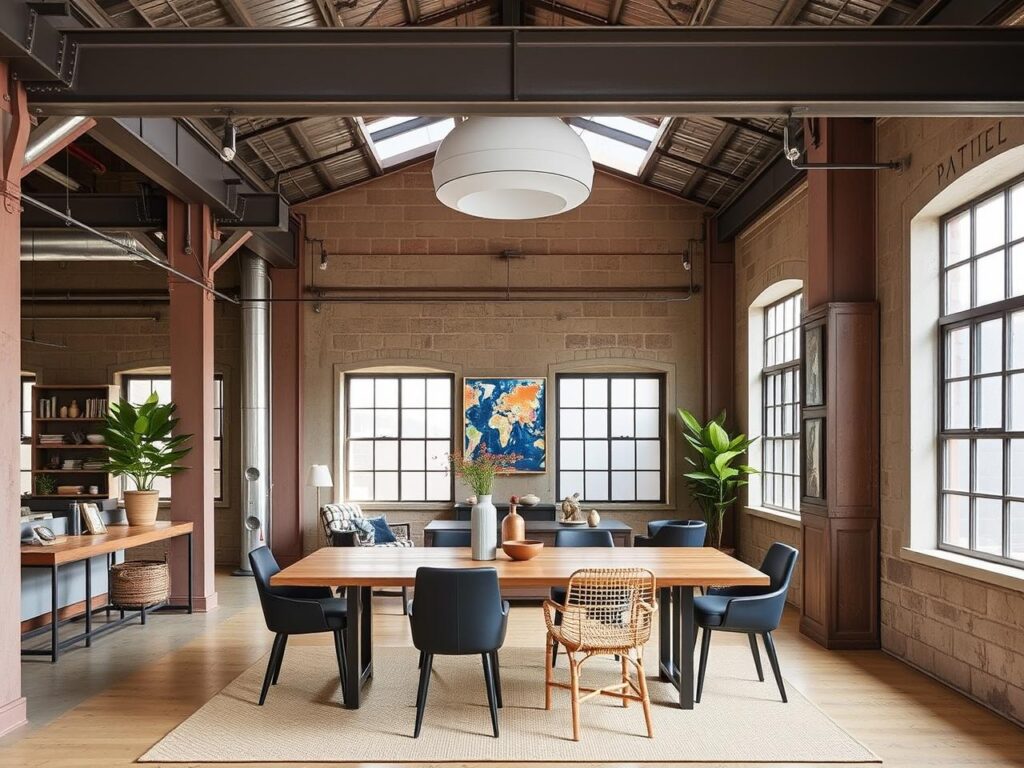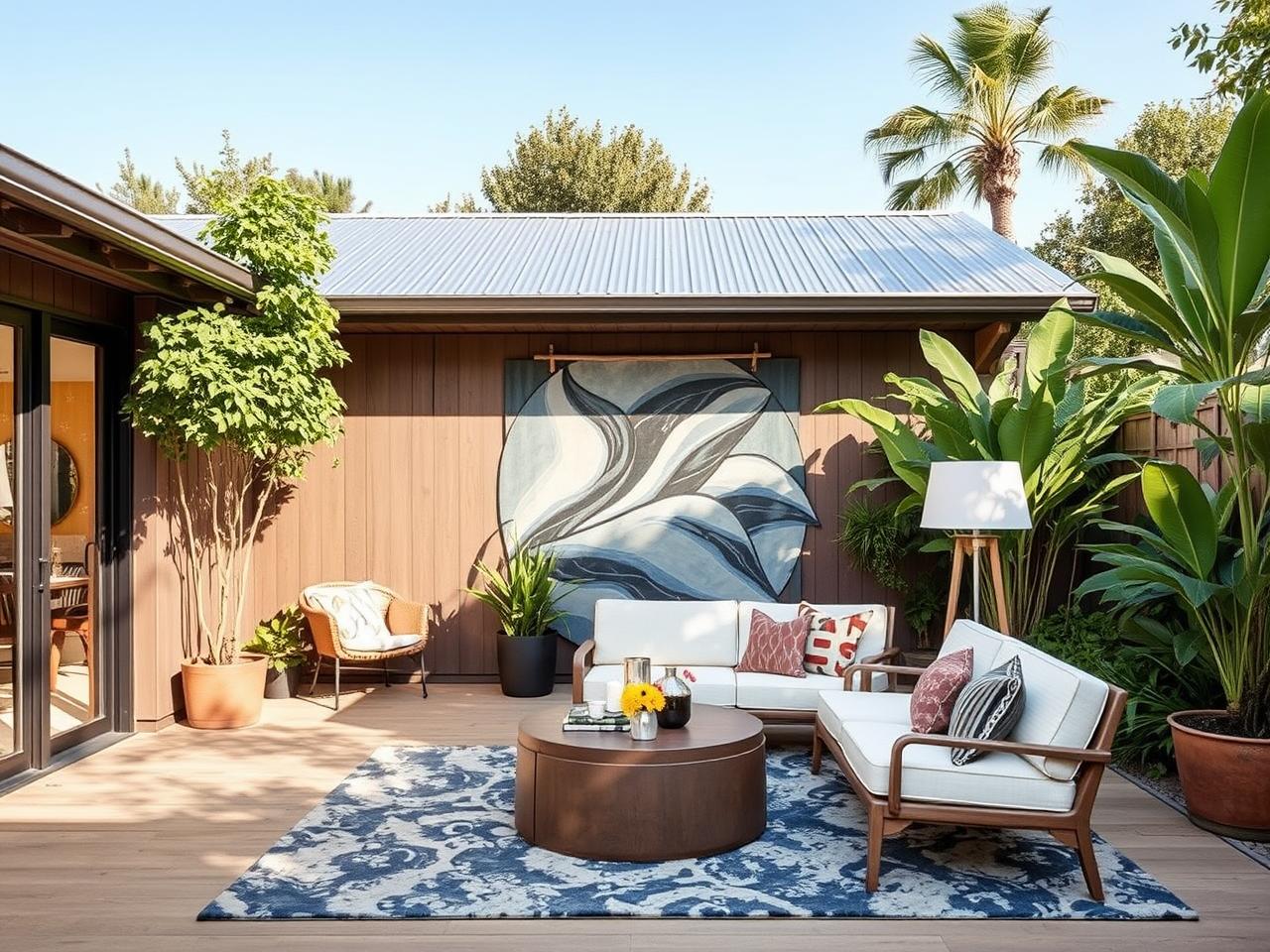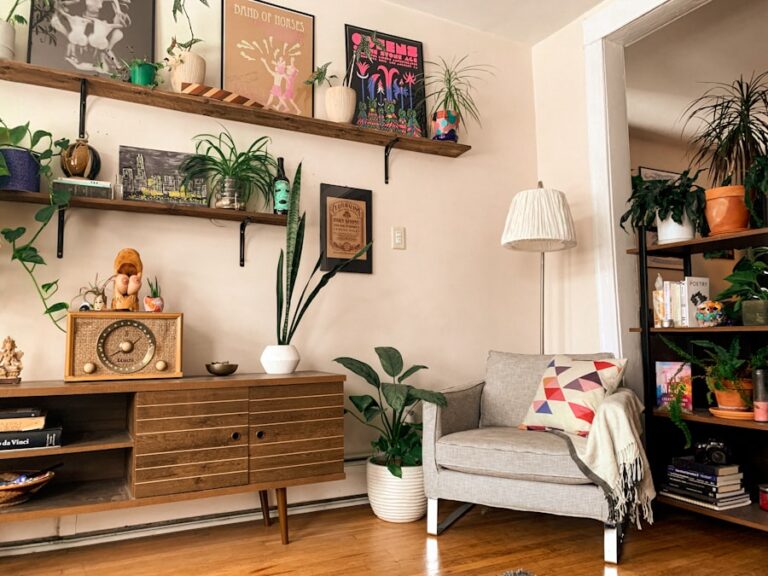Architectural Alchemy: Turning Unusual Spaces into Stylish Havens
Architectural repurposing is the practice of converting non-residential structures into residential spaces. This process involves transforming buildings originally designed for industrial, commercial, or other purposes into functional and aesthetically pleasing homes. Architects and designers engaged in this work must employ creative problem-solving skills to adapt these spaces for comfortable living while often preserving unique architectural features.
The concept of adaptive reuse in architecture extends beyond simply renovating old buildings. It encompasses the reimagining of unconventional spaces to create innovative living environments. This approach requires a deep understanding of spatial design, building systems, and local zoning regulations to successfully convert properties not initially intended for residential use.
Repurposing buildings for residential use often involves addressing challenges such as optimizing natural light, improving insulation, and reconfiguring layouts to accommodate modern living needs. The process may also include preserving historical elements or industrial characteristics that contribute to the space’s unique character. This blend of old and new can result in distinctive homes that reflect both their original purpose and contemporary design sensibilities.
Architectural repurposing has gained popularity in urban areas where available land for new construction is limited. It offers a sustainable alternative to new builds by utilizing existing structures and reducing waste. Additionally, this practice can contribute to urban revitalization by breathing new life into underutilized or abandoned properties.
Key Takeaways
- Architectural alchemy involves transforming unconventional spaces into stylish and functional homes.
- Inspiration for unconventional designs can be found in unexpected places, such as industrial buildings and warehouses.
- Industrial spaces can be repurposed into stylish homes by incorporating unique features and materials.
- Unconventional buildings, such as churches or barns, can be transformed into residential spaces with creativity and vision.
- Balancing functionality and aesthetics is key when designing unusual spaces, creating stylish and livable homes.
Finding Inspiration in Unusual Spaces
Embracing Industrial Heritage
One way to find inspiration in unusual spaces is to embrace their industrial or commercial past. Exposed brick walls, steel beams, and concrete floors can all be used to create a modern and stylish aesthetic. These elements can be incorporated into the design of the home, adding character and charm to the space.
Highlighting Unique Features
Another way to find inspiration in unusual spaces is to look for unique architectural features that can be highlighted and celebrated. For example, a former church may have beautiful stained glass windows or intricate woodwork that can be preserved and incorporated into the design of the home.
Unlocking Hidden Potential
By embracing the history and character of unusual spaces, homeowners can unlock their hidden potential and create truly unique and inspiring homes. With a little creativity and imagination, even the most unlikely spaces can be transformed into stunning and stylish abodes.
Transforming Industrial Spaces into Stylish Homes

One of the most popular forms of architectural alchemy is the transformation of industrial spaces into stylish homes. Industrial buildings such as warehouses, factories, and mills offer a unique canvas for creative design. These spaces often have high ceilings, large windows, and open floor plans, making them ideal for modern living.
The challenge lies in finding ways to soften the industrial aesthetic while still preserving the character of the space. One approach to transforming industrial spaces into stylish homes is to embrace the industrial aesthetic and use it to create a modern and edgy design. Exposed brick walls, concrete floors, and steel beams can all be incorporated into the design to create a raw and industrial look.
This can be balanced with modern furnishings and sleek finishes to create a stylish and contemporary home. Another approach is to soften the industrial aesthetic by adding warmth and texture to the space. This can be achieved through the use of natural materials such as wood and stone, as well as soft furnishings and textiles.
By adding warmth and texture to an industrial space, it can be transformed into a stylish and inviting home.
Repurposing Unconventional Buildings for Residential Use

Architectural alchemy also involves repurposing unconventional buildings for residential use. This can include buildings such as barns, churches, schools, and even water towers. These buildings often have unique architectural features and a sense of history that can be harnessed to create stunning homes.
The challenge lies in finding ways to adapt these buildings for modern living while still preserving their character and charm. One approach to repurposing unconventional buildings for residential use is to embrace their unique architectural features and use them as a starting point for the design. For example, a former barn may have beautiful exposed beams or a soaring ceiling that can be highlighted and celebrated.
These features can be incorporated into the design of the home, adding character and charm to the space. Another approach is to adapt the building for modern living while still preserving its history and character. This can be achieved through careful restoration and preservation of original features, as well as thoughtful additions that complement the building’s unique qualities.
The Art of Balancing Functionality and Aesthetics in Unusual Spaces
Balancing functionality and aesthetics in unusual spaces is a key aspect of architectural alchemy. Unusual spaces often come with unique challenges when it comes to layout and functionality, but they also offer opportunities for creative design solutions. The key is to find ways to make the space both functional and beautiful without compromising on either aspect.
One way to balance functionality and aesthetics in unusual spaces is to carefully consider the layout and flow of the space. This may involve reconfiguring walls or adding partitions to create distinct living areas while still maintaining an open and airy feel. It may also involve finding creative storage solutions to make the most of limited space without sacrificing style.
Another way to balance functionality and aesthetics in unusual spaces is to carefully consider the use of materials and finishes. This may involve choosing durable and practical materials that are also visually appealing, such as concrete countertops or reclaimed wood flooring. It may also involve finding ways to incorporate unique architectural features into the design while still ensuring that they serve a practical purpose.
Incorporating Unique Features and Materials into Unconventional Designs

Embracing the History and Character of the Space
One way to incorporate unique features and materials into unconventional designs is to embrace the history and character of the space. For example, a former factory may have original industrial fixtures or machinery that can be repurposed as unique design elements. These features can be incorporated into the design of the home, adding a sense of history and authenticity to the space.
Experimenting with Unexpected Materials and Finishes
Another way to incorporate unique features and materials into unconventional designs is to experiment with unexpected materials and finishes. This may involve using reclaimed materials such as salvaged wood or vintage fixtures to add character and charm to the space. It may also involve using unconventional materials such as metal or glass in unexpected ways to create a truly unique design.
Enhancing the Overall Design
Ultimately, the key to successfully incorporating unique features and materials into unconventional designs is to find ways to enhance the overall design of the space. By thoughtfully incorporating these elements, architects and designers can create truly one-of-a-kind spaces that showcase their creativity and innovation.
Tips for Creating a Stylish Haven in an Unusual Space
Creating a stylish haven in an unusual space requires careful planning and creative thinking. Here are some tips for achieving this:
1. Embrace the history and character of the space: Unusual spaces often come with a sense of history and character that can be harnessed to create a stylish home.
Embrace these unique qualities and use them as a starting point for your design.
2. Balance functionality and aesthetics: Finding ways to make the space both functional and beautiful is key.
Carefully consider the layout, flow, and use of materials to achieve this balance.
3. Experiment with unique features and materials: Unusual spaces offer an opportunity to experiment with materials and finishes that may not be suitable for traditional homes.
Embrace this opportunity to create a truly unique design.
4. Seek inspiration in unexpected places: Look for inspiration in the history, architecture, and unique features of the space itself.
Use these elements as a starting point for your design.
5. Consider the use of natural light: Unusual spaces often come with large windows or skylights that can be used to bring in natural light.
Take advantage of these features to create a bright and inviting home.
6. Think outside the box: Unusual spaces require a creative approach to design.
Think outside the box and consider unconventional solutions to make the most of the space. In conclusion, architectural alchemy is about transforming unconventional spaces into stylish homes through creative design solutions that balance functionality and aesthetics while incorporating unique features and materials. It requires a keen eye for potential, an appreciation for history, and a willingness to think outside the box.
With careful planning and creative thinking, it is possible to create a truly unique and inviting home in even the most unusual of spaces.
If you’re interested in turning unusual spaces into stylish havens, you might also enjoy reading about the rustic charm of barn house living. This article explores the allure of country life and how to create a cozy and inviting atmosphere in a barn house. Check it out here.
FAQs
What is architectural alchemy?
Architectural alchemy refers to the process of transforming unusual or unconventional spaces into stylish and functional living or working environments through creative design and architectural techniques.
What are some examples of unusual spaces that can be transformed through architectural alchemy?
Unusual spaces that can be transformed through architectural alchemy include old warehouses, barns, churches, industrial buildings, and even shipping containers.
What are the key elements of architectural alchemy?
The key elements of architectural alchemy include innovative design, creative use of space, attention to detail, and the ability to blend modern amenities with the unique characteristics of the original space.
What are the benefits of turning unusual spaces into stylish havens through architectural alchemy?
The benefits of architectural alchemy include the ability to create one-of-a-kind living or working environments, the preservation of historic or unique structures, and the opportunity to maximize the potential of underutilized spaces.
What are some challenges associated with architectural alchemy?
Challenges associated with architectural alchemy may include structural limitations, zoning and building code requirements, and the need for creative problem-solving to address the unique characteristics of the original space.
How can one find architects or designers experienced in architectural alchemy?
One can find architects or designers experienced in architectural alchemy by researching firms or professionals with a portfolio of successful adaptive reuse projects, seeking recommendations from others who have undertaken similar projects, and attending design or architecture events and exhibitions.







